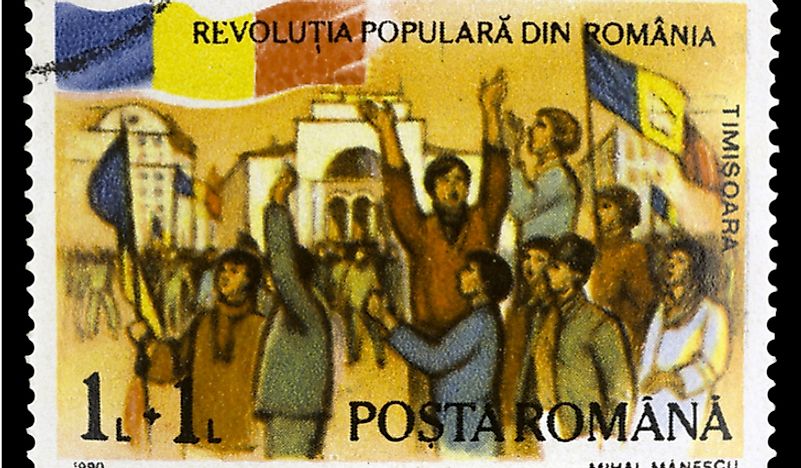The Romanian Revolution

In the 1980s and early 1990s, a revolutionary wave broke out in Central and Eastern Europe, resulting in the end of the Communist rule. This period is also known as the Fall of Nations. One of the revolutions that formed part of the revolutionary wave was the Revolution of 1989 which began in Poland in 1989 and continued in Bulgaria, Hungary, Czechoslovakia, East Germany, and Romania. In Romania, this period of civil unrest took place in December 1989 and was known as the Romanian Revolution. The revolution began in the city Timisoara and spread throughout the country, culminating in an end of Communist rule in Romania and a show of trial and persecution of the party leader Nicolae Ceausescu.
Background Of The Revolution
In 1981, Nicolae Ceausescu, the general secretary of the Communist Party, initiated austerity programs that would enable the country to liquidate its entire national debt of $10 billion. To achieve this, essential commodities such as food were rationed, drastically reducing the standard of living and increasing malnutrition. The presence of secret police almost everywhere in the country made Romania a police state. The public could not state opinions that undermined the Communist Party, and free speech was limited. This austerity program and the widespread poverty made the Communist regime very unpopular.
In March 1989, Ceausescu’s economic policies came under fire by some of the leaders of the Romania Communist Party, but the country was able to pay its debt of about $11 billion months before the expected time. However, the austerity program and food shortage remained unchanged. In November of 1989, Ceausescu was re-elected as the General Secretary of the Communist Party for another five-year term and was expected to survive the revolutionary wave that was sweeping across Eastern Europe. Several students who had demonstrated against the government on November 11th were arrested and only released on December 22nd.
The Uprising
On December 16th, 1989, the Hungarians living in Timisoara held a public protest in an attempt to reject the government’s eviction of Laszlo Tokes, a pastor of the Hungarian Reformed Church. In July the same year, Laszlo had criticized the government in an interview with the Hungarian television. The protestors gathered around the pastor’s home to protect him from harassment and soon spread over the city. The following day, demonstrators broke into the district commissioner’s building and destroyed the party’s symbols and documents. By December 18th, several workers had joined the protest which was slowly overwhelming the state police. On December 21st, Ceausescu addressed a crowd of about 100,000 people to condemn the events of Timisoara. As he was speaking, a section of the crowd began jeering and booing at him. The crowd then took to the street, shouting anti-Ceausescu slogans. However, they were attacked and shot at by the soldier, killing and wounding many. On December 22nd, several military officers defected and refused to carry the president’s order following the mysterious death of the military minister Vasile Milea. Later that day Ceausescu and his wife were arrested and were tried and executed three days later.
Casualties
An estimated 1,104 people died in the Romanian Revolution of which 162 died in the protest between December 16th and 19th while the rest lost their lives after the seizure of power by the new political outfit. About 3,352 people were injured, many of whom were civilians.











